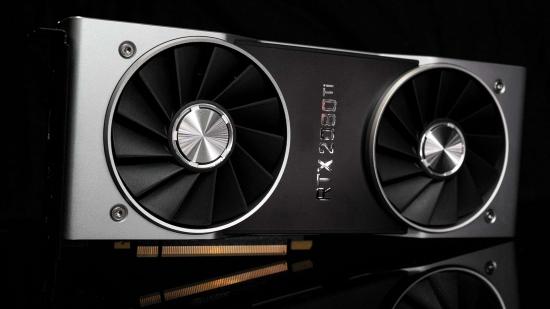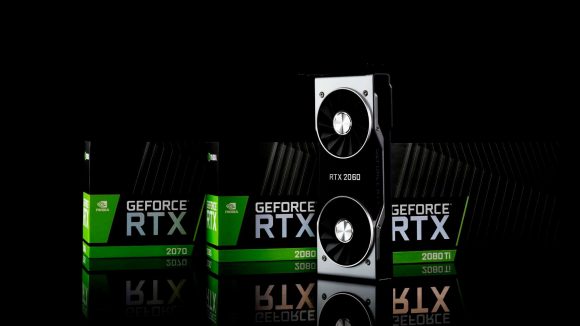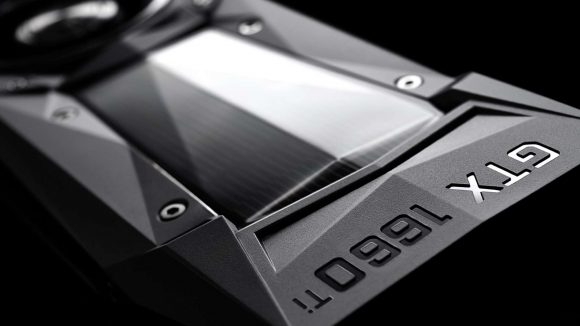Nvidia has announced its latest financials, with CEO, Jen-Hsun Huang, summing it all up in one sentence: “2018 was a record year, but it was a disappointing finish.” Disappointing might be underselling it given that Nvidia’s share price was cut almost in half by the hangover from the crypto decline, a whole heap of problems in its Chinese market, and the fact that nobody seemed to want the incredibly expensive new Turing RTX graphics cards.
But Nvidia’s share price is now rebounding, mostly thanks to the smart move the company made in pre-announcing its Q4 revenue miss before the actual financials were released. This allowed the city to work through its panic and not be surprised/terrified by yesterday’s final numbers.
And those numbers do not look great. The headline figure being that there has been a 45% year-on-year decline in its gaming revenue – down nearly $1bn. That’s quite a “punch in the gut,” as Huang put it to investors a couple of weeks ago, but Nvidia is predicting that despite Q1 likely being a struggle too, the rest of the year will see the company out-performing again. It needs to, because if 2019 ends in the same manner as 2018 there are going to be some tough questions asked of Nvidia’s management.
Colette Kress, Nvidia’s CFO, took analysts through the figures after trading closed last night. “Revenue of $954 million was down 45% year-on-year,” says Kress, “and down 46% sequentially, weaker than our expectations heading into the quarter.”
Perfect panels: These are the best gaming monitors of today
She explained that three factors contributed to the decline in its core gaming business; first the level of GPU inventory left post-Crypto, “deteriorating macro economic conditions, particularly in China” affecting demand for its GPUs, and finally sales of its new Turing graphics cards being “lower than we expected for the launch of a new architecture.”
When questioned about why people weren’t spending the cash on the RTX 2080 or RTX 2070 Jen-Hsun blamed the fact that it was the first time the company had launched a new generation with just the very high end cards, and that the first boards to the market were special edition and overclocked models.
Which is really no-one’s fault but Nvidia’s.
It opted to release the RTX 2080 Ti, et al, with the same Founders Edition schtick that everybody hated about the 10-series Pascal GPUs. Sure, they were factory overclocked this time, but it meant there were no standard MSRP cards available for months after launch. Board partners always want to try and cash in on a new architecture by releasing their own high-end versions to tax the early adopters and Nvidia gave gamers no alternative.
Huang also said that the biggest problem with pricing was that it was unable to launch its mainstream card, the RTX 2060 “for all the reasons that I think everybody understands,” he says. And those reasons? Nvidia tried to make hay while the crypto sun shone and was left with a huge inventory of Pascal mid-range GPUs when it all fell apart. Again, it has no-one else to blame.
But Nvidia is confident it can turn things around, and maybe the impending release of the GTX 1660 Ti will help it start shifting new Turing cards, even if it has needed to nix ray tracing and AI shinies to help…
Because it’s going to take the whole of the first quarter of this year to work through its inventory problems – both AMD and Nvidia are expecting to post weak figures for their next financials – the next three quarters of the year are going to have to be working harder than normal for the green team to hit its yearly expectations.
Nvidia says that gaming is still a growth market and that things will come good with Turing over the year, with Huang suggesting that its gaming notebooks will be one of the biggest drivers for growth over the rest of the year. That’s seriously ambitious, and gambling on the sort of notebook sales that would make up the discrete graphics shortfall could backfire.
But with the city reacting well, and Nvidia’s share price finally going in the right direction again, things are looking better than they did a couple of weeks ago. The only way is up then – Nvidia has hit rock bottom, or so it says.
“We expect the channel inventory correction to be behind us,” says Kress, “and our business to have bottomed.”
Maybe that will have been a wake-up call for Nvidia and things will be different from here on. No more Founders Editions, no more early adopter taxing, no more super high-priced GPUs at launch. Who am I kidding? All of this has happened before and will happen again…


